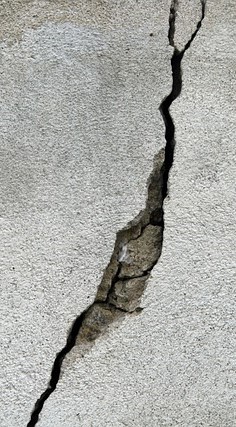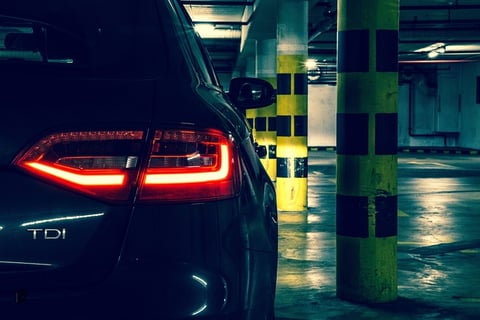Parking Garage Restoration Guide for Subcontractors
9 minutes read

Did you know 93% of owners say parking structures impact the bottom line of the attached buildings in which they’re investing?
Parking garages are more than just boring, bland, gray structures. They’re vital assets, facing daily attack by moisture, airborne chemicals, and abrasion from vehicular and pedestrian traffic. On top of that, the owners often don’t maintain them properly.
On the bright side, this all means parking structures are great opportunities for restoration and repair work.
With the right priorities and context, you can identify the problems and solutions for your job site. When assessing a parking garage restoration or repair job, follow these steps:
- Identify all root causes of damage
- Understand the garage type
- Consider turnaround time
- Match the product to the site conditions
- Identify high-traffic areas
Basics of Parking Garage Restoration
Major restoration of parking garages often involves making structural repairs. The work might include:
- Patching concrete
- Repairing horizontal decks (columns, overhead deck patching)
- Carbon fiber reinforcement
- Sealing
- New expansion joints
Other work may include coating the deck to preserve quality.
Due to either budget constraints or needing to keep part of the garage in service, renovations often happen in phases. In the first phase the contractors might work on Level 1, in the next phase they might address Level 2, and so on.
Unfortunately, the call to action usually comes sooner than it should. Often, value engineering is the last step of creating a new below-grade structure because the crew members use the garage to store materials. Then, when the deadline’s near and they’re running out of materials or budget, they slap on a clear sealer and call it “good.” This results in a call-back a few years later because they didn’t initially protect the structure to their fullest potential.
5 Tips for Parking Garage Repair/Restoration Projects
1. Identify Root Causes
As most parking garages consist of concrete – and lots of it – the project calendar should include plenty of time for damage assessment. This is where the owner will likely hire a structural engineer to identify the symptoms of failing materials and products.
While they’re common in parking garages, cracks generally aren’t a concern until they get big. Reasons for cracking concrete include:
- No treatment of initial settling cracks
- Application of waterproof coat before concrete reached 85% of final compressive strength
- Shrinkage cracks after the concrete cures
- Thermal expansion & contraction
- Other major structural movement
- Settling and age
 Spalling concrete and water are also clear indicators of underlying problems in a parking garage. Rain, melting snow, salt, and chloride from vehicles on upper decks can penetrate concrete, leading to expansion and eventually spalling – chunks of concrete breaking away. Water-saturated concrete is also more prone to freezing, which can also lead to spalling.
Spalling concrete and water are also clear indicators of underlying problems in a parking garage. Rain, melting snow, salt, and chloride from vehicles on upper decks can penetrate concrete, leading to expansion and eventually spalling – chunks of concrete breaking away. Water-saturated concrete is also more prone to freezing, which can also lead to spalling.
Look for rusting metals, rust stains, and efflorescence in a leaking parking garage. Ponding water, though more egregious-looking, is usually solvable with one of the following:
- Simple drains
- Self-leveling patching materials
- Waterproof membranes
Rebar exposure is a similar red flag, potentially signaling major damage and costly repairs. The same water runoff can corrode internal steel reinforcements almost anywhere in the garage. The level of damage and any persisting environmental factors determine whether you’ll have to resort to full replacement.
Expansion joints are critical points, often being the first to leak in a structure. Ensure they are well-maintained and correctly installed, as they can cave under too much vibration or movement. If the original contractor used the wrong kind of joint system in the first place, a new installation may be wiser than repair.
Check the walls and ceilings (i.e. with a sounding test) for irregularities in shape. If you don’t resolve them, they can lead to major structural damage.
2. Understand the Parking Garage Construction Type
A parking facility restoration may cater to a specific need or environment.
At the same time, each type of parking garage has its unique structural characteristics and vulnerabilities. You’ll have to tailor your approach to repair and restoration to ensure longevity and safety.
|
Parking Structure |
Where Should You Focus? |
|
Traditional Cast-in-Place |
Integrity, crack repair, and reinforcement corrosion |
|
Precast |
Connecting joints and slabs -- look for wear and instability |
|
Post-Tension |
Maintain tension cables and address concrete deterioration |
|
Metal Pan Deck |
Metal forms and concrete – focusing on rust and component wear |
|
Hybrid System w/ Metal Pan Deck |
Interaction and condition of different materials, ensuring the integrated structure remains sound |
|
Steel Skeleton |
Treating corroded spots and ensuring integrity of every joint |
|
Concrete Beams |
Larger cracks, spalling, & general strength of the concrete |
|
Waffle Slab |
Reinforcing the integrity of the slab's voids and ribs, ensuring waterproofing and stability |
Your approach will also differ depending on whether the structure is above-grade or below-grade.
A free-standing garage typically faces exposure-related weathering. The main activities should be surface repairs, structural fixes, and waterproofing. Basement garages, such as those under a high-rise, need checks for water intrusion and proper drainage. They may also be at risk of structural pressure from surrounding earth.
3. Consider Turnaround Time
When you work on a garage, some spaces will have to go out of service for a bit. What’s the owner’s tolerance for that?
If a Boston parking garage charges $100,000 monthly for a certain number of spaces, that’s a lot of revenue loss. Even if the financial impact is smaller, the downtime is still an inconvenience for users and tenants.
You’ll need to match your budget and product curing time to the customer’s timeline.
Different products come with different curing times, including ones that dry in 48 hours. As you’d expect, these faster-working products cost more money. In cases where both time and budget are constraints, simple sealant treatments might offer a temporary solution.
4. Matching Product to Job Site
For your reputation’s sake – and the property owner’s, your work must hold up for many years to come. This means considering warranty, durability, and the designed use of the lot.
The protective surface coating's buildup and thickness should match the wear duty – regular, medium, heavy, or extreme. Provided you’re on the hook for a long-term fix, there are three ways to repair cracks for long-lasting waterproofing. They depend on the parking deck’s condition:
- Concrete cracks with no existing traffic-grade coat
- Minor cracks in current traffic coating
- Major cracks in existing traffic coating
Tremco wrote a blog post with clear, simple advice for repairs in each situation.
Example: A helix ramp at an airport undergoes significant wear and tear thanks to near-nonstop use. While a two-component urethane coat would suffice for a regular parking deck repair job, it may only last 1-2 years in an airport application. The helix ramp might require a more robust solution, like a PUMA system.
Sometimes, product choice isn’t just about how much traffic the structure will get, but also the type of traffic it’ll endure. At a hospital or doctor’s office, one parking spot might see five cars in a 24-hour period. A car at a residential parking garage might stay put all day, meaning the spaces might not require a highly durable solution.
As always, the owner’s and your appetite for budget and maintenance will be key considerations.
5. Focus on High-Traffic Areas

Even different areas of the same garage may have varying needs.
Deciding whether to restore the entire deck or just the high-traffic areas is a key strategic decision. We call this “wear balancing.”
High-traffic areas of a parking deck include:
- Driving lanes
- Turning lanes
- Ramp
- Ticket gate
Areas that experience stop-and-go traffic tend to sustain the most wear and require more attention. A ramp will also see more torque and abuse from car tires vs. a flat, straight area. From a cost-efficiency point of view, you might not want to bother to address the parking spaces.
Other Building Concrete Solutions
Restoring or repairing a parking garage is a complex task that requires careful consideration of symptoms, structural types, environmental context, and lead time. And, of course, cash.
Each decision impacts not only the immediate happiness of the property owner, but also the garage’s long-term functionality and visual appeal.
After you fully absorb the context of the job site, get a grasp on the best concrete-repair product options. There are many, many parking garage concrete finishes, sealers, and other solutions out there, so don’t rush the decision.
For more in-depth education, subscribe to our monthly newsletter:

